-
 +4 +1
+4 +1Peering into the secrets of phages to see how they kill bacterial superbugs
A research collaboration involving Monash University has made an exciting discovery that may eventually lead to targeted treatments to combat drug-resistant bacterial infections, one of the greatest threats to global health.
-
 +22 +1
+22 +1Scientists Created Bacteria With a Synthetic Genome. Is This Artificial Life?
In a milestone for synthetic biology, colonies of E. coli thrive with DNA constructed from scratch by humans, not nature.
-
 +3 +1
+3 +1Researchers Make it Possible for Ultrasound to Reveal Gene Expression in the Body
Some of the most important tools in the toolbox of modern cell biologists are special chunks of DNA that act like spies, reporting on the cell's function. The markers, known as reporter genes, allow researchers to get a sense for what cells are doing by watching genetic programs embedded in their DNA turn on and off.
-
 +4 +1
+4 +1Predators could be the antidote to unhealthy herds
The research shows that biological diversity—which includes the presence of predators—can improve the health of some animal populations, and that the predators are sometimes more likely to attack infected individuals.
-
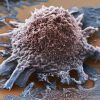 +15 +1
+15 +1Some cancer drugs miss their target. CRISPR could improve their aim
Method that generated drug leads may be flawed
-
 +30 +1
+30 +1AI protein-folding algorithms solve structures faster than ever
The race to crack one of biology’s grandest challenges — predicting the 3D structures of proteins from their amino-acid sequences — is intensifying, thanks to new artificial-intelligence (AI) approaches. At the end of last year, Google’s AI firm DeepMind debuted an algorithm called AlphaFold, which combined two techniques that were emerging in the field and beat established contenders in a competition on protein-structure prediction by a surprising margin.
-
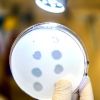 +29 +1
+29 +1These superbug-fighting viruses are making a comeback
A broad-spectrum look at the future of phages
-
 +10 +1
+10 +1CRISPR baby mutation significantly increases mortality
A genetic mutation that a Chinese scientist attempted to create in twin babies born last year, ostensibly to help them fend off HIV infection, is also associated with a 21% increase in mortality in later life, according to an analysis by University of California, Berkeley, scientists.
-
 +25 +1
+25 +1Genetically Modified Viruses Help Save A Patient With A 'Superbug' Infection
For the first time, scientists have used genetically modified viruses to treat a patient fighting an antibiotic-resistant infection. Isabelle Carnell-Holdaway, 17, began the experimental treatment after doctors lost all hope. She was struggling with a life-threatening infection after a lung transplant. With the new treatment, she has not been completely cured. But the Faversham, England, teenager has recovered so much that she has resumed a near-normal life.
-
 +26 +1
+26 +1Teenager recovers from near death in world-first GM virus treatment
A British teenager has made a remarkable recovery after being the first patient in the world to be given a genetically engineered virus to treat a drug-resistant infection. Isabelle Holdaway, 17, nearly died after a lung transplant left her with an intractable infection that could not be cleared with antibiotics. After a nine-month stay at Great Ormond Street hospital, she returned to her home in Kent for palliative care, but recovered after her consultant teamed up with a US laboratory to develop the experimental therapy.
-
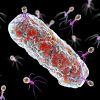 +10 +1
+10 +1Phage Therapy Win: Mycobacterium Infection Halted
When Graham Hatfull, PhD, a professor at the University of Pittsburgh specializing in phage biology and James Soothill, MD, a microbiologist at Great Ormond Street Hospital for Children (GOHS) in London, met over 20 years ago at a phage biology meeting in Tbilisi, Georgia, they could not have predicted that they would one day collaborate to save the life of a teenage girl with a Mycobacterium infection.
-
 +11 +1
+11 +1Synthetic biology used to target cancer cells while sparing healthy tissue
Stanford researchers have developed synthetic proteins that can rewire cancer cells in a lab dish by co-opting critical disease-associated pathways.
-
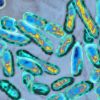 +2 +1
+2 +1Virus tricks the immune system into ignoring bacterial infections
A bacterium which is responsible for about 10% of hospital-acquired infections in the US uses a virus to trick a person’s immune system into ignoring it. The virus, known as a phage, infects the Pseudomonas aeruginosa bacterium, which frequently resists antibiotic treatment. The phage prompts the immune system into going after it instead of its microbe host, researchers report1 on 28 March in Science. The bacterium and the phage, called Pf, exist in a symbiotic relationship that scientists suspect is more widespread in the microbial world than previously believed.
-
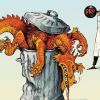 +11 +1
+11 +1Protein-slaying drugs could be the next blockbuster therapies
Researchers are hijacking the cell’s protein-disposal system in the fight against Alzheimer’s and intractable cancers.
-
 +26 +1
+26 +1A multicellular way of life for a multipartite virus
A founding paradigm in virology is that the spatial unit of the viral replication cycle is an individual cell. Multipartite viruses have a segmented genome where each segment is encapsidated separately. In this situation the viral genome is not recapitulated in a single virus particle but in the viral population. How multipartite viruses manage to efficiently infect individual cells with all segments, thus with the whole genome information, is a long-standing but perhaps deceptive mystery.
-
 +12 +1
+12 +1Forget growing weed—make yeast spit out CBD and THC instead
We as a species would be miserable without yeast. Baker's yeast has given us leavened bread for thousands of years. And I don’t even want to begin to imagine a world without beer and wine, which rely on yeast to convert sugar into alcohol.
-
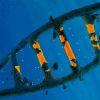 +16 +1
+16 +1CRISPR Just Got More Powerful With an "On” Switch
For all its gene-editing prowess, mechanistically CRISPR is a bit like a power tool with a broken “off” switch. Hear me out: the entire CRISPR machinery is designed in a test tube, and once constructed it’s always on. When introduced into animals or humans, CRISPR is set to roam the entire body, seeking its target gene to edit or destroy until it loses steam and gets metabolized by the body.
-
 +1 +1
+1 +1No One Is Prepared for Hagfish Slime
It expands by 10,000 times in a fraction of a second, it’s 100,000 times softer than Jell-O, and it fends off sharks and Priuses alike.
-
 +24 +1
+24 +1Targeting an RNA-binding protein to fight aging
As we age, our bodies undergo biological changes that cause a decline in the function of our cells and tissues. However, most studies attempting to identify molecules involved age-related dysfunctions have focused only on mechanisms based on mRNA transcription, a very important step in gene expression, but nonetheless only part of the complex regulatory mechanisms in our cells.
-
 +12 +1
+12 +1How biologists are creating life-like cells from scratch
Built from the bottom up, synthetic cells and other creations are starting to come together and could soon test the boundaries of life. By Kendall Powell.
Submit a link
Start a discussion




















